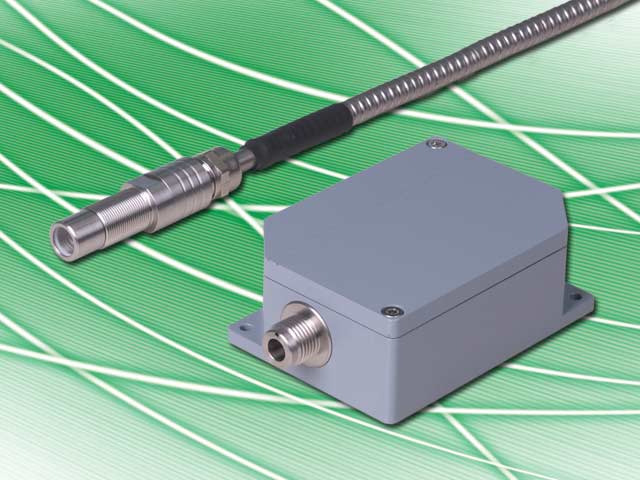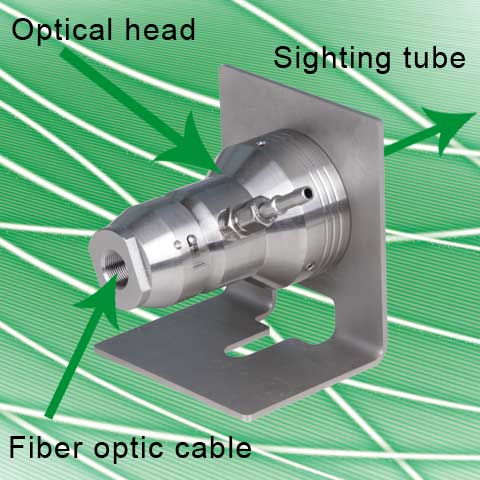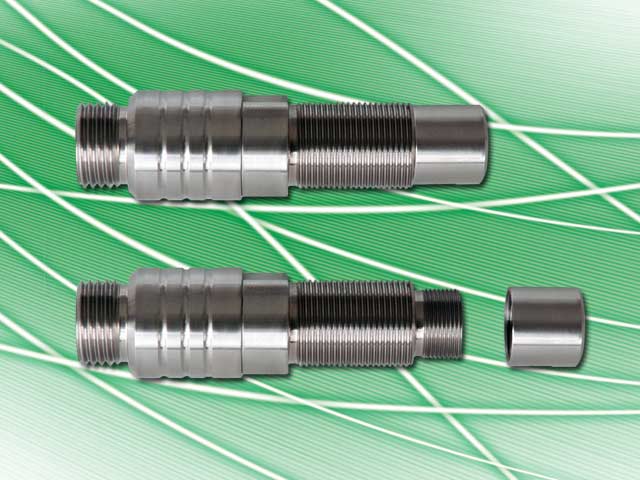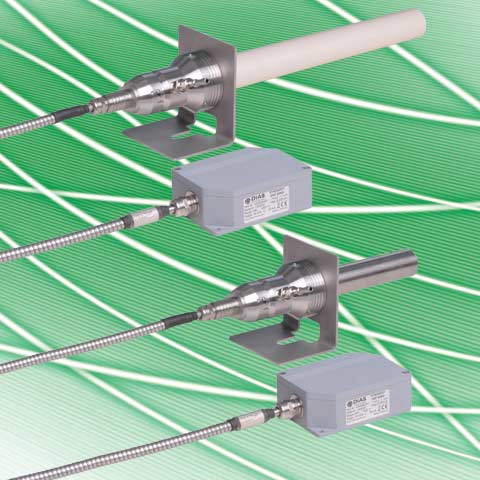Production of Container Glass
Replacement of thermocouples by pyrometers in the production of container glass
Individual Section machines are used for the production of container glass. In different production processes in the feeder and the melting furnace glass drops are produced whose temperature has to be monitored in the line of process control and quality assurance. Digital pyrometers with fiber optic specifically for the non-contact temperature on glass can be used instead of the common thermocouples. Pyrometers have a lot of advantages regarding price and long-term stability.
Container glass is an umbrella term for different types of glass: glass bottles, jars, drinkware, bowls, pitchers, vases or laboratory glassware.
Pyrometer: easy to use, well-prices and long-term stable
More and more thermocouples especially in the container glass industry are replaced by particular pyrometers. The advantage of these pyrometers is the simple use, the good price and the very long holding time in comparison with conventional thermocouples. As the glass is very aggressive and the thermocouples have to imerge in liquid molten glass, the holding time of the thermocouples is limited. In addition they have to be defended with an expensive platinum protective shellfrom mechanical and chemical destruction.
Thermocouples of type K are normally used for financial reasons and because of the temperature range. If the thermocouples measure through liquid glass, they are working on their temperature limit. Therefor they are subject to aging that can be only balanced with continuous recalibration. That means additional work and extra costs.
The experts for the temperature measurement on glass – DIAS fiber optic pyrometers PYROSPOT 3x
In contrast pyrometers are not subject to aging and have to be recalibrated and checked once a year or even only every two years. The company DIAS Infrared GmbH has developed especial fibre optics pyrometers (types PYROSPOT DSF 30NG and DSF 34NG) for this application that can be used without cooling at high ambient temperatures in glass industry.
The pyrometers are mainly installed in the forehearth but also on the glass tank and glass feeder. The pyrometers of series PYROSPOT 3x consist of an optical head without any electronics, a fibre optics cable and evaluation electronics. The optical head and the fibre optics cable can be used without cooling in ambient temperatures up to 250 °C. To keep the lense of the optical head permanent clean, a stainless steel mounting angle with air purge is used.
The mounting angle is equipped with a kind of bayonet adapter in which the optical head is screwed in. This construction enables quick removal and if needed, an easy cleaning of the lense. In case of a damage, the lense can be removed and replaced without any recalibration of the pyrometer.
A viewing tube made of Inconel (up to 1100 °C) or ceramic (up to 1700 °) can be lead through the ceiling of the forehearth or through the wall/ceiling of the tank. In this way, the pyrometer can be adjusted optimal to the existing construction and the environmental conditions.
Up to six pyrometers are mostly used along a forehearth and three or four forehearths are feeded from a glass tank. So a new project needs typically 18 to 24 pyrometers. Currently, pyrometers with 2-wire-technology are used (DSF 30NG) because it enables a easy wiring to the control room. The DSF 34NG pyrometer is destined for the connection to a bus system and can be integrated easily via the digital interface RS-485 in a existing system.
Both pyrometers types are built in digital technology and can be adjusted without recalibration in every sub temperature measurement range within the main temperature range from 600 °C to 1800 °C. So the spares inventory is relieved and the measurement ranges can be adjusted optimal to the measurement task.




